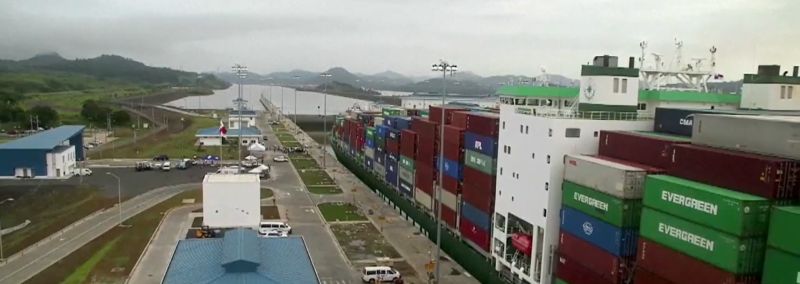 In August, we posted Panamax Meets Pana-Drought — Drought Restrictions In Canal Cause Delays and 200 Ship Backlog. A record drought associated with the naturally occurring El Nino climate pattern has resulted in one of the country’s driest years in over 70 years. In July, the Panama Canal Authority (ACP) reduced the average daily transit capacity in the canal to 32 vessels per day from 38.
In August, we posted Panamax Meets Pana-Drought — Drought Restrictions In Canal Cause Delays and 200 Ship Backlog. A record drought associated with the naturally occurring El Nino climate pattern has resulted in one of the country’s driest years in over 70 years. In July, the Panama Canal Authority (ACP) reduced the average daily transit capacity in the canal to 32 vessels per day from 38.
Now, transit slots will be cut to 25 per day starting November 3 and will be gradually reduced further over the next three months to 18 slots on February 1, The cuts are anticipated to only worsen supply chain shortages. The Panama Canal handles an estimated 5 percent of seaborne trade.
Water levels in Gatun Lake, the rainfall-fed principal reservoir that floats ships through the Panama Canal’s lock system, have “continued to decline to unprecedented levels for this time of year,” the ACP said.
“The recorded precipitation for October has been the lowest on record since 1950 (41% below), and so far, 2023 ranks as the second driest year for the same period,” the authority said.
The New York Times reports that the canal’s board recently proposed building a new reservoir in the Indio River to bolster the water supply and increase traffic through the canal, which generates over 6 percent of Panama’s gross domestic product. Under the plan, the new water supply could allow for an additional 12 to 15 passages daily.
Building the reservoir is expected to cost nearly $900 million, and the canal authority could start accepting bids from contractors toward the middle of next year with construction starting early in 2025. But that timeline could well be delayed; the construction of larger locks was completed two years late, in 2016, and that project was marred by cost disputes.
The NY Times also notes that the efforts to secure new water supplies could be a race against climate change.
Because interest in building a canal dates to the 19th century, Panama has rainfall records going back some 140 years. That gives scientists more confidence when concluding that a weather change is a permanent shift and not merely random, said Steven Paton, a director of the Smithsonian Tropical Research Institute’s Physical Monitoring Program on an island in Lake Gatun, which makes up a large part of the canal and supplies most of its water.
He said that while scientists were unsure about climate change’s impact on El Niño, two of the driest El Niño periods of the last 140 years had occurred in the last quarter-century and that the current one could be the third.
“It doesn’t say that this is climate change,” Mr. Paton said, “but it does say that this is wholly consistent with almost all of the climate change models.”
Thanks to Alaric Bond for contributing to this post.

One wonders about reclaiming and pumping water back up? I expect there are reasons why not, probably starting with too slow expending too much motive power for pumps, size of apparatus etc. Ultimately– too much money?